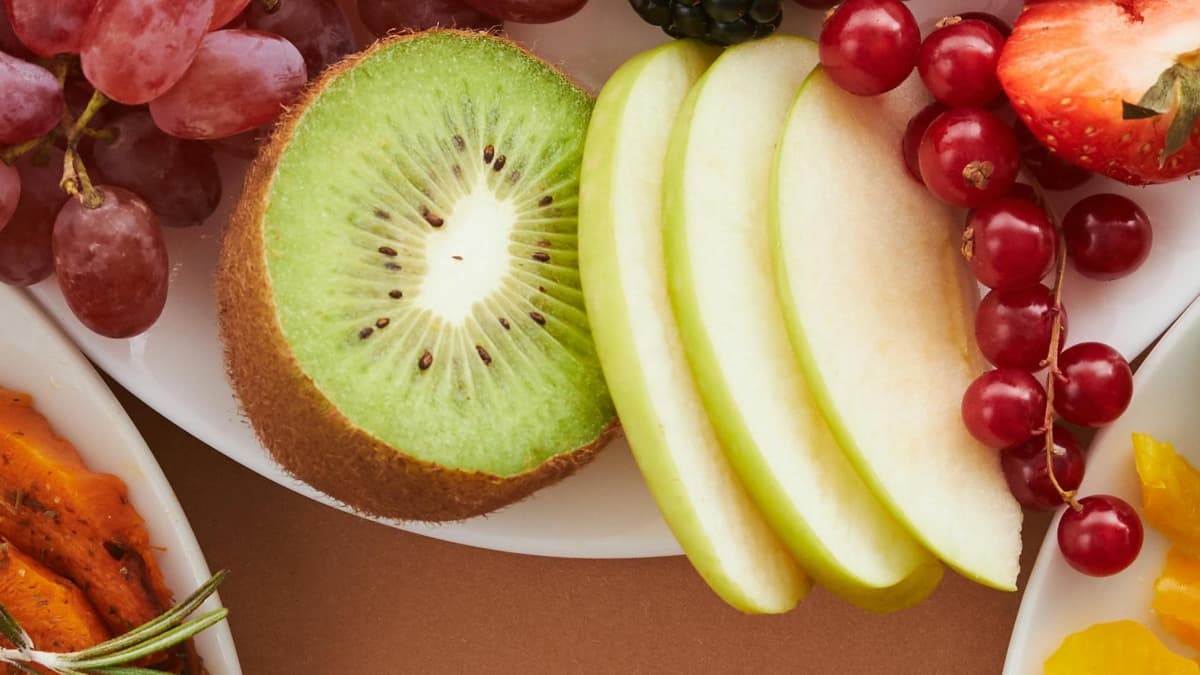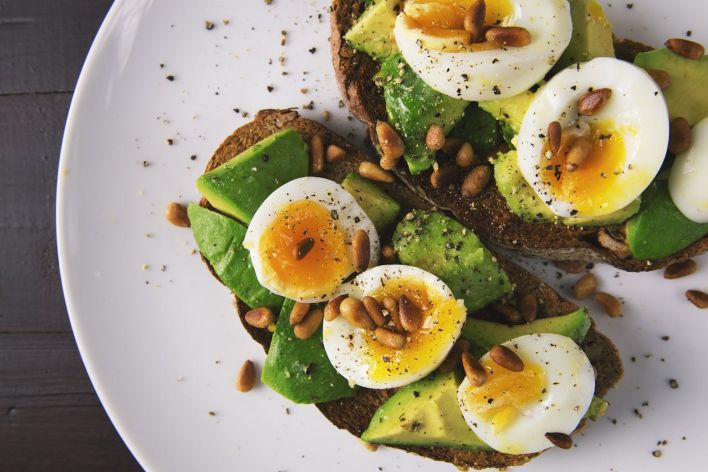Healthy snacking and meal planning
By Pinkey Sharma |
Date 08-08-2024

Table of Contents
- Nutritious Snacks: Key to Healthy Eating Patterns
- Quick and Easy Snacks: Convenience Without Compromising Nutrition
- Creating Balanced and Healthy Meal Plans for Children
- Tips for Packing Healthy Lunches for School-Aged Children
- The Best Way to Incorporate Healthy Snacks into a Diet Plan
- Healthy Snacks for Weight Loss for Kids
- Knowing Healthy Snacking
- Snack Ideas:
- Conclusion :
- FAQS :
Admissions Open for
Healthy snacking is very essential in designing a balanced diet. Much more, this holds for the case of children. Snacks, both mentally and physically, give growing children the injection of energy needed to stay active and focused between meals. A variety of healthful snacks can really help a child develop good eating habits and contribute to overall well-being.
Nutritious Snacks: Key to Healthy Eating Patterns
Nutritious snacks are the cornerstone of a healthy diet for kids. These snacks should be rich in essential nutrients such as vitamins, minerals, fiber, and healthy fats. Incorporating whole foods like fruits, vegetables, nuts, and seeds can contribute to your child's daily nutritional intake and support healthy growth and development.
Examples of nutritious snack ideas for kids include:
- Fruits and Vegetables: Fresh fruits and vegetables are generous providers of many vitamins, minerals, and fiber. As delightful options for a fit snack, try apple slices with peanut butter, carrot sticks with hummus, or a mixed berry bowl.
- Whole Grains: Reach out to whole grain options—whole grain crackers, oatmeal bars, or even whole wheat toast with avocado. These snacks will keep one full with energy while they are playing about.
- Dairy Products: Low-fat yogurt, cheese sticks, cottage cheese are excellent sources of both calcium and protein. It makes not just the bones strong but the muscular ones, too.
- Nuts and seeds: Nutrient-dense snack foods, examples include almonds and walnuts for healthy fats, sunflower seeds for protein, and chia seeds for extra fiber. Be mindful of portion sizes and possible allergies.
Quick and Easy Snacks: Convenience Without Compromising Nutrition
Parents understand how difficult it can be to find food that is healthy and easily prepared. Fortunately, it's the time to uncover all healthy, convenient snacks.
Check out some of the best possible easy and fast snack ideas that kids adore:
- Pre-Cut Fruits and Vegetables: Keep pre-cut fruits and vegetables in the refrigerator for a quick and easy snack. Dip in hummus or yogurt first to make it more delicious.
- Individual Nut Butter Packets: Buy nut butter packets single-serve for on-the-go eating; top on whole grain crackers or pair with apple slices.
- Greek Yogurt Parfaits: Layer Greek yogurt, fresh fruits, honey, and granola for an easy snack to prepare in minutes. Greek Yogurt Parfait, Greek yogurt, layered with fresh fruits and honey added on top, then topped with a crunchy granola topping, makes for a tasty and satisfying, portable snack.
Creating Balanced and Healthy Meal Plans for Children
A good meal plan for children needs to be such that it must be thoughtfully provided with a wide range of foods from every food group. A planned meal gives the growing children the right nutrients and sets the base for healthy eating throughout life. Here are some tips on how to create well-balanced meal plans:
- Include a Variety: Each meal should contain some balance of proteins, whole grains, fruits, vegetables, and dairy. This way, your child will be getting a good variety of most of the nutrients.
- Focus on Whole Foods: Emphasize whole, unprocessed foods rather than processed and pre-packaged foods. Whole foods are usually more nutrient-dense and carry fewer unhealthy additives.
- Portion Control: Let your child get the right amount with portion control to possibly reduce overeating and help in maintaining proper weight.
- Hydrate: Help your child drink a lot of water throughout the day. Limit sugar drinks, water and milk should be the go-to beverages.
Tips for Packing Healthy Lunches for School-Aged Children

Healthy lunches at school provide the energy and focus for children to succeed in activities pertaining to academics.
Here are some tips on how one can pack nutritious yet appealing lunches:
- Plan Ahead: Pre-planning and preparing lunch a night in advance will help save the under-pressure time that is spent during morning hours. This also keeps one away from last-minute, unhealthy choices.
- Involve Your Child: Engage your child with the lunch-packing process. Let them have a say about what they want and what will go into that lunch box. Allowance to make healthy choices may win them over to eat and enjoy the meal.
- Keep it Balanced: Add proteins, whole grains, fruits, and vegetables. For example, a whole-grain sandwich with lean turkey, with a side of baby carrots, a fruit piece, and a cup of yogurt is complete and very nourishing for lunch.
- Consider portion sizes: Enqueue portions depending on your child's age and activity level. Ensure that the portions are correct to avert overeating and wastage.
- Mix up the foods: Cycle through different foods so lunches will not be boring. Try different fruits, vegetables, and protein sources to offer a variety of nutrients.
- Go the Homemade Way: Baking or preparing homemade snacks such as granola bars or whole-grain muffins is another option to add to the lunchbox. Most of these snacks are healthier and can be customized as per your child's taste.
- Make it Fun: Make lunches colorful, with the help of colorful fruits and vegetables. You could also make interesting shapes out of sandwiches and fruits by using cookie cutters to make mealtime more exciting.
The Best Way to Incorporate Healthy Snacks into a Diet Plan
Healthy snacks should be a part of a well balanced diet to extend energy and prevent overeating at mealtimes. The following are some tips for introducing snacks into your child's diet effectively.
- Fixed Times for Snacks: Plan regular times for snacks between meals to avoid excessive hunger and overeating. This will also keep the child energetic throughout the day.
- Portion Control: Assist the children in consuming the right portion and avoid overeating. The tips for portion control can also include using small bowls or containers while serving snacks.
- Balancing Snacks with Main Meals: Plan snacks in the light of main meals. For example, if lunch lacks enough protein, then prepare a snack that is full of protein such as Greek yogurt or even cheese sticks.
- Ensure Nutrient-Dense Food: Choose nutrient-dense snacks over calorie-dense foods. Go for vitamin-, mineral-, and fiber-rich foods while keeping an eye out for excess added sugar and unhealthy fats.
- Engage the Child: Give time to engage your child in choosing and even preparing snacks. It will cultivate a healthy relationship with food and their interest in eating healthy.
Whole Foods - The Foundation of a Healthy Diet:
Whole foods are the least processed and free of additives; they should form the basis for a healthy diet. Including whole foods in your child's diet measurably improves their well-being. Some of these ways include higher amounts of nutrients: generally, most whole foods have higher amounts of important nutrients than food types that are processed. They hold vitamins, minerals, antioxidants, and fiber, good for developmental growth.
- Less Added Ingredients: A whole food item contains less added sugar, unsaturated fats, and other artificial ingredients, making it comparatively better for your child.
- Better Satiety: The fiber found in whole foods really helps in keeping a person full, hence preventing overeating and thus maintaining a healthy weight.
- Supports Healthy Digestion: Whole foods are mostly digested properly and can easily support clear bowel movements for overall digestive fitness.
Healthy Snacks for Weight Loss for Kids
One of the biggest tasks for most parents is to get their kids to eat nutrient-rich foods while at the same time keeping them at a healthy weight. Including healthy snacks in their diet might turn out to be feasible in this regard. Low-calorie and nutrient-rich snacks play their role in controlling hunger, energizing the body, supporting growth, and development without putting on extra pounds. The following are snack ideas and tips designed to encourage healthy weight loss in children.
Knowing Healthy Snacking

Healthy weight loss snacks should be whole foods that are rich in fiber, protein, and healthy fats. These make the children feel full and satisfied between meals. It is essential to avoid unhealthy snacks that are loaded with added sugar, unhealthy fats, and empty calories. Parents have to emphasize fruits, vegetables, whole grains, and lean proteins to achieve a balance.
Snack Ideas:
-
Cucumber Slices: Cucumber Slices with Greek Yogurt Dip Cucumbers are extremely low in calories and contain lots of water, making them one of the most hydrating snacks. Adding some Greek yogurt dip provides protein and probiotics for gut health and satiety. All that has to be done is to slice a cucumber and mix some Greek yogurt with dill or mint for added flavor.
-
Berry Salad: Berries such as strawberries, blueberries, and raspberries are dense in terms of both vitamins and antioxidants and are very low in calories. A mixed berry salad can present a sweet treat packed full of good levels of many essential elements. Serve it fresh or sprinkle with chia seeds to increase the fiber and omega-3 fatty acids present.
-
Air-popped popcorn: Air-popped popcorn is a whole grain that's high in fiber, and low in calories, and hence makes for a great snack in keeping one's weight in check. The healthy way of keeping popcorn in shape would be to air-pop it without added butter or oil. Nutritional yeast really gives a cheesy flavor without adding excess calories and fat.
-
Celery Sticks with Almond Butter: Celery has very few calories and is filling and satisfying with its crunch. Celery sticks with almond butter have a nice mix of fiber, protein, and healthful fats—merging for a filling, full, long time feeling in kids. Choose natural almond butter without added sugars or oils.
-
Kale Chips: Kale Chips are a nutrient-dense vegetable that's dense with vitamins A, C, and K. One such best-loved recess snacks comes in the form of home-baked kale chips, baked with a thin coating of olive oil and sprinkled with some sea salt; when crunchy, they offer up a low amount of calories per serving and satisfy more savory cravings.
-
Sliced Watermelon: Watermelon is very hydrating and low in calories, hence an excellent snack to have for weight loss. Its natural sweetness can quench your sugar cravings by eating a decent amount of vitamins A and C as well. Chill them for a refreshing treat, especially during warmer days.
- Edamame Steamed pods:Edamame Steamed pods are rich in protein and fiber to enable satiety and muscle building, low in calories, and hence a great snack option. Sprinkle lightly with sea salt to bring out the flavor without overdoing it on the sodium meter.
- Apple slices with cinnamon:The reason apple slices with cinnamon apples are filling is because of the high fiber and low-calorie nutrients. Thinly sliced apples sprinkled with cinnamon provide a sweet and savory treat without actually adding the calories through sugar addition. Added to this, cinnamon does have some metabolism-enhancing properties that can help in their assimilation.
Conclusion :
Add some healthy snacks into your child's diet for overall well-being and meal balance. You can easily give your child the required nutrition to support his or her growth and development by going for quick, easy snack options that are nutritionally dense. From planning a balanced meal, engaging with your children, and keeping a focus on whole foods to setting a good example with your eating patterns and relationship with food, recall the tips for raising a healthy eater.
Careful planning is needed, but with a focus on nutrient-dense foods, there really can be so much parents can do to provide their child with the foundation for a fit, energetic, and healthy future.
FAQS :
How do you plan nutritious meals and snacks?
A clean-eating meal plan includes tons of fresh fruits and veggies, high-fiber whole grains and legumes, healthy fats, and lean proteins (like fish and chicken). It skips added sugars and minimizes sodium and saturated fats that can damage our hearts when we eat too much of them.
Why is it important to follow a healthy eating plan?
A healthy diet is essential for good health and nutrition. It protects you against many chronic non-communicable diseases, such as heart disease, diabetes, and cancer. Eating a variety of foods and consuming less salt, sugars and saturated and industrially-produced trans-fats are essential for a healthy diet.
Why are snacks important in meal planning?
Well-planned snacks can make it easier to limit portion size at meals by allowing a 'top up' between meals and also avoid being so hungry at the next meal that you eat too much or eat unplanned discretionary foods.
Liked what you read? Feel free to share this article with your friends and spread the knowledge!
Related Blogs
Sleep and childern's health: Role of sleep in children's health and physical growth.
Food Labels and healthy choices: ways to teach kids about food labels and develop healthier eating choices.
Mental Health and Well-being for Kids: Discover effective ways to support children's mental health and well-being.
CBSE Schools In Popular Cities
- CBSE Schools in Bangalore
- CBSE Schools in Mumbai
- CBSE Schools in Pune
- CBSE Schools in Hyderabad
- CBSE Schools in Chennai
- CBSE Schools in Gurgaon
- CBSE Schools in Kolkata
- CBSE Schools in Indore
- CBSE Schools in Sonipat
- CBSE Schools in Delhi
- CBSE Schools in Rohtak
- CBSE Schools in Bhopal
- CBSE Schools in Aurangabad
- CBSE Schools in Jabalpur
- CBSE Schools in Jaipur
- CBSE Schools in Jodhpur
- CBSE Schools in Nagpur
- CBSE Schools in Ahmednagar
- CBSE School In Tumkur

Call Us to know more about Orchids
Swipe Up

.jpg&w=1920&q=80)














